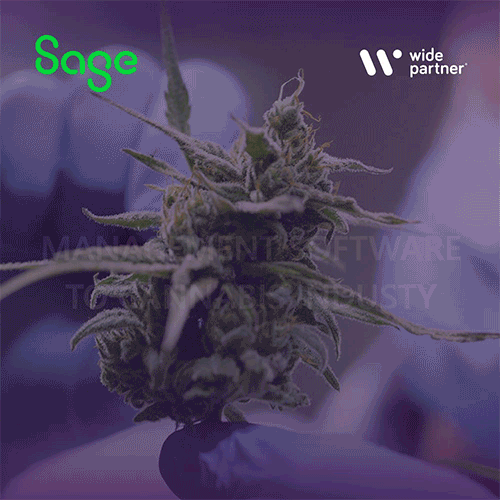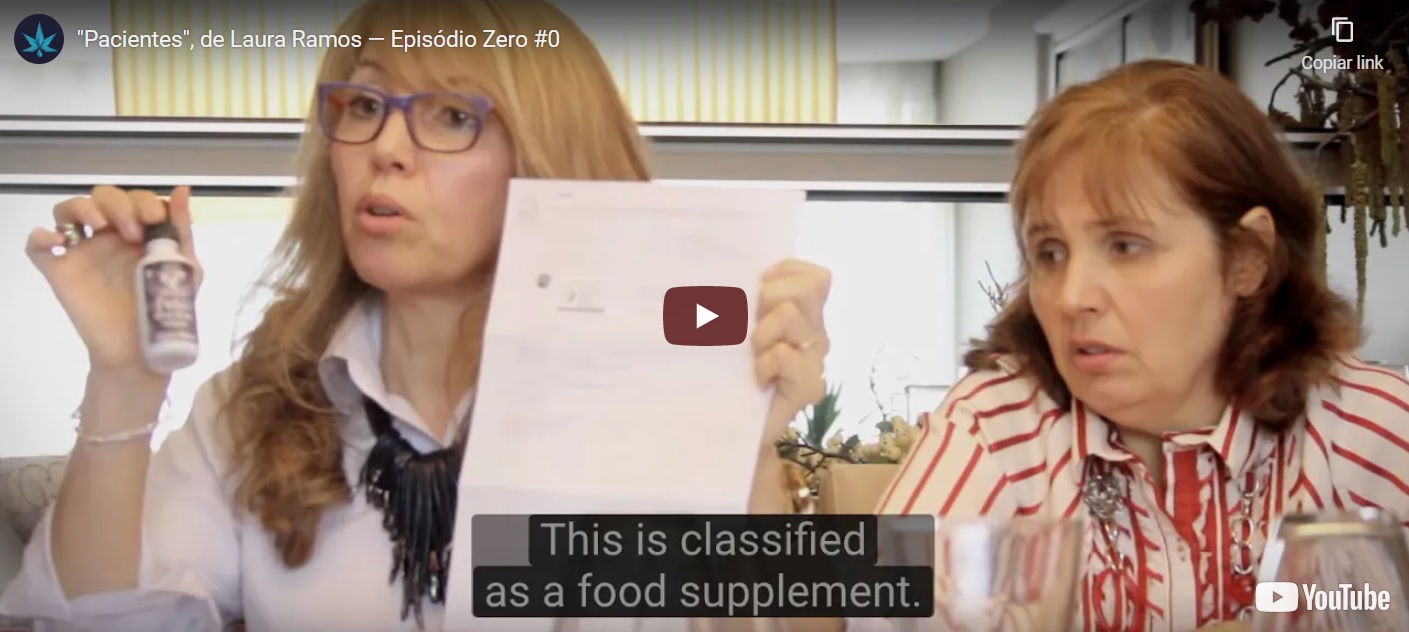Health
Cannabis in Epilepsy
Published
3 years agoem
By
Soraia Tomás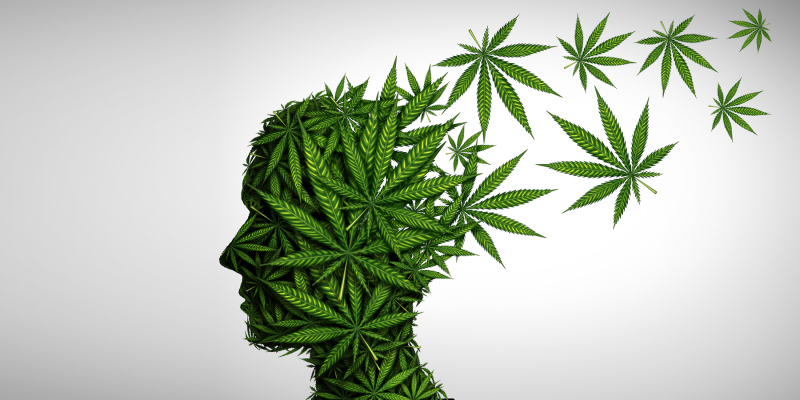
defined by World Health Organization (WHO) as a “chronic neurological disorder that affects people of all ages”, Epilepsy affects more than 50 million people worldwide. In Portugal, it is estimated that there are about 50 thousand people with this disease. The role that the endocannabinoid system plays in the genesis of Epilepsy provides the pharmacological basis that should encourage research into the use of exogenous cannabinoids, such as the phytocannabinoids produced by cannabis, in the treatment of Epilepsy.
Epilepsy is a disorder of the nervous system characterized by a lasting predisposition to generate epileptic seizures and the neurobiological, cognitive, psychological and social consequences thereof.
In recent years, CBD (cannabidiol) has proved to be an extremely relevant therapeutic weapon. Its anti-convulsant properties, combined with its low toxicity to the body, have made this cannabinoid a valuable tool in the control of epileptic seizures that are refractory to other drugs.
Several studies also prove the neuroprotective properties of CBD, which reduce neuronal hyperexcitability and thus preserve cognitive abilities, reducing the progression of damage caused to the nervous system due to repeated seizures.
Epileptic seizures and epilepsy
An epileptic seizure is the transient occurrence of signs and/or symptoms due to excessive or synchronous neuronal activity in the brain, with variable duration (generally between a few seconds to several minutes); ie, it is an event resulting from a temporary dysfunction of the brain's electrical activity.
Epilepsy, in turn, is a disease that is expressed through recurrent epileptic seizures (two or more, separated by intervals greater than 24 hours, or a single seizure associated with a high assessed risk of recurrence), sudden and unpredictable, uncontrollable. by the patient (ie, unprovoked or reflexive).
Epilepsy is said to occur when at least two episodes of seizures not related to alcohol withdrawal, hypoglycemia, heart or other problems occur. In some cases, just one seizure is enough to make the diagnosis of Epilepsy, since there is a high risk of having more.
Causes
Possible causes of epilepsy are:
- genetic: when epilepsy is understood as the direct result of a known or presumed genetic defect and in which seizures are the main symptom of the disease (eg mutations in the SCN1A gene and Dravet syndrome). It does not exclude the possibility that environmental factors (outside the individual) may contribute to the expression of the disease.
- "Structural/metabolic”: when there is a distinct structural or metabolic condition or other disease that has been shown to be associated with a substantially increased risk of developing epilepsy. Structural injuries include acquired disorders such as stroke, trauma, and infection. Some of the structural causes are genetic in origin (eg, tuberous sclerosis or some malformations of cortical development).
- ''Cause unknown'': is a neutral way to designate that the nature of the underlying cause is not yet known; there may be a fundamental genetic defect or it may be the consequence of a separate, as yet unrecognized disorder. This cause represents a very significant percentage of cases.
types of crises
Crises do not all manifest in the same way and the same person can have different crises.
partial epileptic seizure The electrical discharge takes place in a small area of the brain surface. Sometimes it becomes generalized and affects the rest of the brain. Symptoms differ depending on the area of the brain where the discharge occurs. In the cerebral motor zone, it manifests itself through involuntary movements on one side of the body, without loss of consciousness. In the region of sensitivity, it can cause a transient focal sensory change, such as tingling. In the visual zone it can cause a vision of lights.
Generalized epileptic seizure – The electrical discharge affects the entire brain surface at the same time.
Generalized tonic-clonic seizure – It is associated with loss of consciousness. The person immediately falls to the ground. It also manifests itself through involuntary movements of the limbs. Biting the tongue, foaming at the mouth and urinary incontinence are other manifestations of this type of crisis.
Generalized absence crisis – The person remains motionless, disconnected from the surroundings, with the gaze fixed, for 10 to 15 seconds. This type of crisis is common in children and adolescents. And it tends to disappear with age. It can cause drops in school performance due to attention and learning deficits.
myoclonic crisis – It is characterized by sudden tremors of all or part of the body for a few seconds.
Generalized atonic crisis – It implies a sudden loss of muscle tone and consciousness, which lasts only a few seconds and from which one recovers in a few seconds as well.
Symptoms
There are several types of epileptic seizures. Depending on the type of seizures, there may be one or more of the following signs:
- Staring (5-10 seconds), no response to stimulation;
- Sudden loss of muscle strength with a fall;
- Rapid blinking or eye revulsion;
- Mouth (chewing) or face movements;
- Rhythmic movements (“stretching”) of all or part of the body;
- Muscle stiffness (hypertonia)
- Leakage of urine/feces;
- Tongue/cheek biting;
- Loss of consciousness with fall;
- Confused, aimless behavior;
- Reporting of subjective sensations (sensory, sensory, cognitive or emotional)
Treatment
Treatment must be highly personalized, taking into account your own risks and the dangers of more seizures. It is therefore important to consider the age of the patient, the characteristics of the attacks, the associated factors and the social and professional context. Many of the anti-epileptic drugs have significant side effects and this risk requires proper consideration.
The Endocannabinoid System and Epilepsy
The Endocannabinoid System (ESA) is an endogenous system (which originates from within), present in all vertebrates, and is associated with several physiological processes such as neuronal regulation, appetite regulation, energy, immunity [1] and reproduction [ two].
This system involves cannabinoid receptors, endocannabinoids and enzymes, which synthesize and metabolize endocannabinoids.  Endocannabinoids are lipid mediators, derived from polyunsaturated fatty acid chains that have the ability to modulate various processes including mammalian reproduction [3]. They are synthesized “on demand'” from phospholipid precursors that are located in the plasma membrane of cells [4]. This metabolism results in the production of two endogenous cannabinoids, anandamide (AEA) and 2-arachidonoylglycerol (2-AG). The first target of AEA and 2-AG are cannabinoid receptors (CB1 and CB2) [1] expressed in peripheral tissues, to which they couple, activating intracellular signaling mechanisms. In addition to the latter, AEA and 2-AG also have affinity for the GPR55, GPR119, perixoma proliferator-activated receptor (PPAR) and transient vanilloid potential receptor 1 (TRPV1) receptors.
Endocannabinoids are lipid mediators, derived from polyunsaturated fatty acid chains that have the ability to modulate various processes including mammalian reproduction [3]. They are synthesized “on demand'” from phospholipid precursors that are located in the plasma membrane of cells [4]. This metabolism results in the production of two endogenous cannabinoids, anandamide (AEA) and 2-arachidonoylglycerol (2-AG). The first target of AEA and 2-AG are cannabinoid receptors (CB1 and CB2) [1] expressed in peripheral tissues, to which they couple, activating intracellular signaling mechanisms. In addition to the latter, AEA and 2-AG also have affinity for the GPR55, GPR119, perixoma proliferator-activated receptor (PPAR) and transient vanilloid potential receptor 1 (TRPV1) receptors.
In producing the intended effect, the endocannabinoids AEA and 2-AG are degraded by specific enzymes that include fatty acid amide hydrolase (FAAH) and monoacylglycerol lipase (MAGL), respectively, or by endocytosis.
Currently, it is known that both endocannabinoids and phytocannabinoids act on the ends of neurons, affecting neurotransmission through their action at the cannabinoid receptors, with high levels of receptors located in the presynaptic membrane and the components of endocannabinoid synthesis found in the postsynaptic membrane. However, endocannabinoids also act on other cells of the Central Nervous System (CNS), such as glial cells (astrocytes and microglia) and are produced by different neurons and cells (eg oligodendrocytes). Cannabinoids affect the vasculature of the CNS. [5][6][7]
The CB1 receptor is G protein-coupled and expressed on the presynaptic membrane of axon terminals. When the presynaptic membrane undergoes depolarization, AEA and 2-AG are synthesized in the postsynaptic membrane and released into the synaptic cleft, coupling with CB1 receptors located in the presynaptic. By activating these receptors, they cause transient hyperpolarization of the presynaptic membrane, suppressing calcium voltage channels and activating K+ channels. This transient hyperpolarization of presynaptic channels inhibits the release of certain neurotransmitters. [8] During an epileptic seizure, excessive release of excitatory neurotransmitters such as glutamate results in the activation of CB1 receptors on the presynaptic membrane. This mechanism of feedback negative, produced by CB1 receptors, results in decreased glutamate release, thus playing a key role in controlling neuronal hyperexcitability, preventing seizures.
When examining brain tissue, surgically removed from a patient with epilepsy, scientists observed a low expression of CB1 receptors in the axon terminals of glutaminergic neurons, which results in an abnormal inhibition of the control of glutamate release. They also reported high levels of axon terminal CB1 receptors on gabaminergic neurons, thus inhibiting the release of GABA (gamma-aminobutyric acid). [9] The combination of these two factors results in a state of neuronal hyperexcitability, which increases the likelihood of seizures. [10]
The role that the endocannabinoid system plays in the genesis of Epilepsy provides the pharmacological basis that should encourage research into the use of exogenous cannabinoids, such as the phytocannabinoids produced by the cannabis plant, in the treatment of epilepsy.
Cannabis and Epilepsy
The therapeutic potential of cannabis in epilepsy and seizures is documented throughout history. The cannabis plant contains more than 160 cannabinoids that, individually and collectively, act in different ways in the central nervous system (CNS) of mammals. [11]
Cannabinol (CBN) and cannabidiol (CBD) were first isolated in 1940 and D9-tetrahydrocannabinol (THC) in 1942 [12][13]. The chemical structure of CBD was characterized by Mechoulam and Shvo in 1963 and followed by the elucidation of the structure of THC in 1964. [14][15] THC was the first phytocannabinoid to be analyzed for its anticonvulsant properties, which appear to be a consequence of its high affinity with the CB1 receptor, behaving as a partial agonist (which causes an action) of the same. [16]
CBD (cannabidiol), an active component of the cannabis plant, has stood out in recent years with several scientific studies that have proven its therapeutic potential in controlling various types of epilepsy. [17] [18]
Although the exact mode of action of this phytocannabinoid is still unknown, it is assumed that the effect on neuronal excitability results from its ability to activate receptors such as vanilloid and thus influence the release and reuptake of important neurotransmitters such as glutamate and adenosine. [19][20][21].
The anticonvulsant properties, combined with the reduced toxicity to the organism, [22] made CBD a valuable tool in the control of epileptic seizures refractory to other drugs. [23] [24]
Several studies also prove the neuroprotective properties of CBD, reducing neuronal hyperexcitability [25], thus preserving cognitive abilities and reducing the progression of damage caused to the nervous system due to repeated seizures. These properties give CBD a good neuroprotective capacity [26][27], with no toxicity rate or danger of overdose associated with prolonged use of conventional anti-epileptic drugs [28][29].

Senn, L., Cannazza, G., & Biagini, G. (2020). Receptors and channels possibly mediating the effects of phytocannabinoids on seizures and epilepsy
In 2013, a questionnaire was carried out to parents of children with refractory epilepsy on cannabinoid-based treatment. Participants reported an 85% reduction in the number of seizures, 14% no seizures during the treatment period, 9% saw no change in seizure frequency, and 4% reported an increase in seizures.
Although the prevalence of adverse effects decreased over the course of treatment with cannabis preparations, the most frequently reported side effects were drowsiness (12,8%), fatigue (9,4%), irritability (9,4%) and nausea. (6,8%). Respondents reported improvement in sleep pattern (53%), alertness (71%) and mood (63%). [33]
In 2015, a study performed with orally administered cannabis extract showed improvement in symptoms of refractory epilepsy in pediatric patients. [30] In the same year, a questionnaire was carried out to parents of children with refractory epilepsy who resorted to a treatment based on cannabinoids. About 42% of parents reported a greater than 80% reduction in seizure frequency, 16% noted a greater than 50% reduction in seizure frequency, 16% reported a greater than 25% reduction, and 16% had no seizures. reduction. In addition, 60% of parents reported a decrease in the administration of other antiepileptics after starting CBD treatment. Positive effects also included improved mood state (79%), improved concentration levels (74%) and improved sleep pattern (68%). Reported adverse effects included fatigue (16%) and drowsiness (37%). [32]
Recently, a study involving 214 patients (aged 1 to 30 years) with severe, intractable, childhood-onset, treatment-resistant epilepsy showed a reduction in seizure frequency after initiation of cannabinoid-based treatment. [31]
GW Pharmaceuticals has launched four randomized clinical trials for the evaluation of CBD oral solution (Epidiolex) in pediatric epilepsy resistant to conventional treatments, namely in Dravet syndrome (DS) and Lennox-Gastaut (LGS). The GW Pharmaceuticals study randomized 225 patients, with an average age of 16 years. Patients taking Epidiolex had a 37% or 42% reduction in seizures at 10 or 20 mg/kg/day, respectively, compared with 17% on placebo. Although it was generally well tolerated, 26 patients on Epidiolex and eight on placebo reported a serious adverse effect.

GW Pharma's Epidiolex has not yet been approved by the European Medicines Agency (EMA)
These results allowed the FDA approval of Epidiolex in 2018 for Dravet and Lennox-Gastaut syndrome, constituting an alternative for these patients, particularly in epilepsy refractory to conventional treatments. To date, Epidiolex has not been approved by the EMA.
In Portugal, Law no. approved cannabis as a treatment for epilepsy and treatment of severe childhood seizure disorders such as Dravet and Lennox-Gastaut syndromes.
Cannabinoids Isolated vs Cannabis Extracts
The benefits of using isolated phytocannabinoids is a topic that still generates some controversy in the medical and scientific community. [34] There are reports from numerous patients who extol the benefits of using the whole plant in relation to isolated extracts of its components. Greater efficacy is observed in the treatment using less quantity and adverse effects.
Studies carried out in humans suggest the potential of CBD to attenuate the effects of THC, namely in terms of cognition/memory. [35][36][37]
A recent study reported that a 4 times lower dose of hemp extract is needed to achieve the same therapeutic effects when compared to using CBD extract alone. [38] In addition, the same study found that there is a lower incidence of adverse effects when using hemp extract.
The benefits of using a complete plant extract vs isolated support the hypothesis suggested by Ethan Russo, a well-known Neurologist and Pharmacologist, that the true potential of this plant lies in the synergistic combination between the various components, the so-called “ entourage”. [34]
REFERENCES
- Pertwee RG. Endocannabinoids and Their Pharmacological Actions. Handb Exp Pharmacol 231: 1-37, 2015.
- Maccarrone M, Valensise H, Bari M, Lazzarin N, Romanini C, and Finazzi-Agrò A. Progesterone up-regulates anandamide hydrolase in human lymphocytes: role of cytokines and implications for J Immunol 166: 7183-7189, 2001.
- Wolfson ML, Muzzio DO, Ehrhardt J, Franchi AM, Zygmunt M, and Jensen F. Expression analysis of cannabinoid receptors 1 and 2 in B cells during pregnancy and their role on cytokine production. J Reprod Immunol 116: 23-27, 2016.
- Piomelli D, Giuffrida A, Calignano A, and Rodríguez de Fonseca F. The endocannabinoid system as a target for therapeutic drugs. Trends Pharmacol Sci 21: 218-224, 2000.
- Pertwee RG, ed. Endocannabinoids. In: The Handbook of Experimental Pharmacology. Vol 231. Switzerland: Springer International Publishing; 2015
- LuY, Anderson HD. Cannabinoid signaling in health and disease. Can J Physiol Pharmacol. 2017;95(4):311-327.
- National Academies of Sciences, Engineering, and Medicine. The Health Effects of Cannabis and Cannabinoids: The Current State of Evidence and Recommendations for Research🇧🇷 Washington, DC: The National Academies Press. 2017; https://www.nap.edu/read/24625/chapter/1. Accessed August 12, 2019.
- . Sugaya Y, Kano M. Control of excessive neural circuit excitability and prevention of epileptic seizures by endocannabinoid signaling. Cell Mol Life Sci 2018;75:2793–2811.
- Camilleri M. Cannabinoids Lu Y, Anderson HD. Cannabinoid signaling in health and disease. Can J Physiol Pharmacol. 2017;95(4):311-327.
- Liu B, Song S, Jones PM, Persaud SJ. GPR55: from orphan to metabolic regulator? Pharmacol Ther. 2015; 145: 35-42.
- Hanus LO, Meyer SM, Munoz E, Taglialatela-Scafati O, Appendino G. Phytocannabinoids: a unified critical inventory. Nat Prod Rep 2016;33:1357–1392.
- Adams R, Pease DC, Clark JH. Isolation of cannabinol, cannabidiol and quebrachitol from red oil of Minnesota wild Hemp. J Am Chem Soc 1940;62:2194-2196.
- Wollner HJ, Matchett JR, Levine J, Loewe S. Isolation of a physiologically active tetrahydrocannabinol from cannabis Sativa resin. J Am Chem Soc 1942;64:26–29.
- Mechoulam R, Shvo Y. Hashish. The structure of cannabidiol. Tetrahedron 1963;19:2073–2078.
- Gaoni Y, Mechoulam R. Isolation, structure, and partial synthesis of an active constituent of Hashish. J Am Chem Soc 1964;86:1646-1647.
- Ameri A, Wilhelm A, Simmet T. Effects of endogenous cannabinoid, anandamide, on neuronal activity in rat hippocampal slices. Br J Pharmacol 1999;126:
- Devinsky O and other. Cannabidiol in patients with treatment-resistant epilepsy: an open-label interventional trial. Lancet Neurol. 2016 Mar;15(3):270-8.
- Devinsky O and other. Cannabidiol: pharmacology and potential therapeutic role in epilepsy and other neuropsychiatric disorders. 2014 Jun;55(6):791-802
- De Petrocellis L, Ligresti A, Moriello AS, Allara M, Bisogno T, Petrosino S, et al. Effects of cannabinoids and cannabinoid-enriched Cannabis extracts on TRP channels and endocannabinoid metabolic enzymes. Br J Pharmacol. 2011;163:1479-94. doi: 10.1111/j.1476-5381.2010.01166.x.
- Campos AC, Ferreira FR, Guimaraes FS. Cannabidiol blocks long-lasting behavioral consequences of predator threat stress: possible involvement of 5HT1A receptors. J Psychiatr Res. 2012;46:1501-10. doi: 10.1016/j.jpsychires.2012.08.012.
- Sylantyev S, Jensen TP, Ross RA, Rusakov DA. Cannabinoid- and lysophosphatidylinositol-sensitive GPR55 receptor boosts neurotransmitter release at central synapses. Proc Natl Acad Sci US A. 2013;110:5193-8. doi: 10.1073/pnas.1211204110.
- Bergamaschi MM, Queiroz RH, Zuardi AW, Crippa JA. Safety and side effects of cannabidiol, a Cannabis sativa constituent. Curr Drug Saf. 2011 Sep 1;6(4):237-49.
- Fabio Arturo Iannotti and others. Nonpsychotropic Plant Cannabinoids, Cannabidivarin (CBDV) and Cannabidiol (CBD), Activate and Desensitize Transient Receptor Potential Vanilloid 1 (TRPV1) Channels in Vitro: Potential for the Treatment of Neuronal Hyperexcitability. ACS Chem. Neurosci., 2014, 5 (11), pp 1131–1141
- Fabio Arturo Iannotti and others. Nonpsychotropic Plant Cannabinoids, Cannabidivarin (CBDV) and Cannabidiol (CBD), Activate and Desensitize Transient Receptor Potential Vanilloid 1 (TRPV1) Channels in Vitro: Potential for the Treatment of Neuronal Hyperexcitability. ACS Chem. Neurosci., 2014, 5 (11), pp 1131–1141
- Hampson AJ, Grimaldi M, Lolic M, Wink D, Rosenthal R, Axelrod J. Neuroprotective antioxidants from marijuana. Ann NY Acad Sci. 2000;899:274-82.
- Hampson AJ, Grimaldi M, Lolic M, Wink D, Rosenthal R, Axelrod J. Neuroprotective antioxidants from marijuana. Ann NY Acad Sci. 2000;899:274-82.
- Campos AC, Fogaça MV, Sonego AB, Guimarães FS. Cannabidiol, neuroprotection and neuropsychiatric disorders. Pharmacol Res. 2016 Oct;112:119-127.
- Bergamaschi MM, Queiroz RH, Zuardi AW, Crippa JA. Safety and side effects of cannabidiol, a Cannabis sativa constituent. Curr Drug Saf. 2011 Sep 1;6(4):237-49.
- Gram L, Bentsen KD. Hepatic toxicity of antiepileptic drugs: a review. Acta Neurol Scand Suppl. 1983;97:81-90
- Press CA, Knupp KG, Chapman KE. Parental reporting of response to oral cannabis extracts for treatment of refractory epilepsy. Epilepsy Behav. 2015 Apr;45:49-52.
- Devinsky O, Marsh E, Friedman D, Thiele E, Laux L, Sullivan J, et al. Cannabidiol in patients with treatment-resistant epilepsy: an open-label interventional trial. Lancet Neurol. 2016;15:270-8. doi: 10.1016/S1474-4422(15)00379-8.
- Porter BE, Jacobson C. Report of a parent survey of cannabidiol-enriched cannabis use in pediatric treatment-resistant epilepsy. Epilepsy Behavior 2013 Dec;29(3):574-7
- Hussain SA, Zhou R, Jacobson C, Weng J, Cheng E, Lay J, Hung P, Lerner JT, Sankar R. Perceived efficacy of cannabidiol-enriched cannabis extracts for treatment of pediatric epilepsy: A potential role for infantile spasms and lennox- spendut syndrome. Epilepsy Behav 2015 Jun;47:138-41.
- Russo, EB Taming THC: Potential cannabis synergy and phytocannabinoid-terpenoid entourage effects. br J. Pharmacol. 2011, 163, 1344–1364.
- Morgan, CJ; Schafer, G.; Freeman, TP; Curran, HV Impact of cannabidiol on the acute memory and psychotomimetic effects of smoked cannabis: Naturalistic study: Naturalistic study [corrected]. br J. Psychiatry. 2010, 4, 285–290. [CrossRef]
- Hayakawa, K.; Mishima, K.; Hazekawa, M.; Sano, K.; Irie, K.; Orito, K.; Egawa, T.; Kitamura, Y.; Uchida, N.; Nishimura, R.; et al. Cannabidiol potentiates pharmacological effects of ∆9-tetrahydrocannabinol via the CB1 receptor-dependent mechanism. Brain Res. 2008, 1188, 157–164.
- Osborne, AL; Solowij, N.; Weston-Green, K. A systematic review of the effect of cannabidiol on cognitive function: Relevance to schizophrenia. Neuroscience Biobehav. Rev. 2017, 72, 310–324.
- Pamplona, FA; Rolim da Silva, L.; Coan, AC Potential Clinical Benefits of CBD-Rich Cannabis Extracts Over Purified CBD in Treatment-Resistant Epilepsy: Observational Data Meta-analysis. Front Neurol. 2018, 9, 759.
* Soraia Tomás is a Nurse, graduated from the Escola Superior de Enfermagem de Coimbra in 2015. She worked in the intensive care of Cardio-Thoracic surgery and lung transplantation in Lisbon. She currently works at the Spine Center, a spine surgery service and an intensive care unit for general surgery at Hospital da Luz in Coimbra, the city where she lives. Enthusiastic in the field of Medicinal Cannabis, he is a member of the scientific council of the Portuguese Observatory of Medicinal Cannabis, attended conferences in this area (Portugal Medical Cannabis, Cannabis Europa, CannX, among others) and obtained a postgraduate degree in GMP's for Medicinal Cannabis, course carried out by the Portuguese Observatory of Medicinal Cannabis in partnership with the Military Laboratory of Chemical and Pharmaceutical Products and the Faculty of Pharmacy of the University of Lisbon. President of the Board of APCNNA – Portuguese Association for Information on Cannabis, intends to develop projects dedicated to the dissemination, education and training in medical cannabis to health professionals and the general public, thus promoting excellence in professional practice and safe and effective access. to cannabinoid therapies.
____________________________________________________________________________________________________
[Disclaimer: Please note that this text was originally written in Portuguese and is translated into English and other languages using an automatic translator. Some words may differ from the original and typos or errors may occur in other languages.]____________________________________________________________________________________________________

What do you do with €3 a month? Become one of our Patrons! If you believe that independent cannabis journalism is necessary, subscribe to one of the levels of our Patreon account and you will have access to unique gifts and exclusive content. If there are many of us, we can make a difference with little!
Soraia Tomás, graduated in Nursing from the Escola Superior de Enfermagem de Coimbra in 2015, worked in intensive care of Cardio-Thoracic surgery and lung transplantation in Lisbon. She currently works at the Spine Center, a spine surgery service and an intensive care unit for general surgery at Hospital da Luz in Coimbra, the city where she lives. Enthusiastic in the field of Medicinal Cannabis, he is a member of the scientific council of the Portuguese Observatory of Medicinal Cannabis, attended conferences in this area (Portugal Medical Cannabis, Cannabis Europa, CannX, among others) and obtained a postgraduate degree in GMP's for Medicinal Cannabis, course carried out by the Portuguese Observatory of Medicinal Cannabis in partnership with the Military Laboratory of Chemical and Pharmaceutical Products and the Faculty of Pharmacy of the University of Lisbon. President of the Directorate General of APCNNA – Portuguese Association for Information on Cannabis, intends to develop projects dedicated to the dissemination, education and training in medical cannabis to health professionals and the general public, thus promoting excellence in professional practice and safe and secure access. effective to cannabinoid therapies.
-
Soraia Tomáshttps://cannareporter.eu/author/soraia/
-
Soraia Tomáshttps://cannareporter.eu/author/soraia/
-
Soraia Tomáshttps://cannareporter.eu/author/soraia/
-
Soraia Tomáshttps://cannareporter.eu/author/soraia/
Related News
-
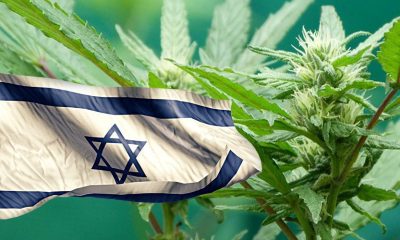

Israel: Health authorities to extend medical cannabis licenses during Gaza conflict
-


Switzerland: Pilot project with recreational cannabis advances in 2023
-


Andalusian Supreme Court acquits cannabis club officials
-
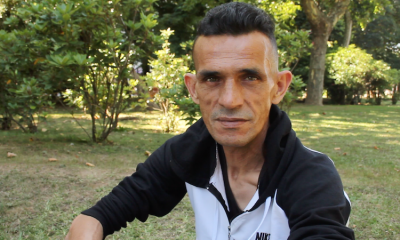

Paulo Correia: “It was with weed that I left alcohol and other drugs”
-
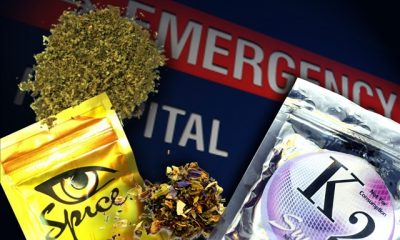

USA: States with legal cannabis had fewer cases of poisoning with synthetic cannabinoids. Study recorded 61 deaths
-


GNR admits not being able to distinguish hemp from cannabis

Mais recentes


Álvaro Covões, who acquired land from Clever Leaves, says he has “no interest in growing cannabis”
At the beginning of April, we reported that Álvaro Covões, founder and CEO of 'Everything is New', had purchased the land where he was located...


Portugal's regulatory advantage in the cannabis industry
In the dynamic landscape of European cannabis cultivation, Portugal has emerged as an interim leader. Although it shares many natural advantages with...


ICBC Berlin shines again. It's the beginning of a new era for the cannabis industry in Germany
ICBC Berlin was the first major international cannabis conference to take place after the legalization of adult use in...


USA: Mike Tyson products recalled for mold contamination
California authorities have issued a mandatory recall notice for two products from Mike Tyson's cannabis brand,...


4:20 is coming and there are celebrations in Porto and Lisbon
The date for celebrating cannabis culture is approaching! This Saturday, April 20th, is the day when...


Paul Bergholts, alleged leader of Juicy Fields, detained in the Dominican Republic
Paul Bergholts, the alleged leader of the Juicy Fields pyramid scheme, has been detained in the Dominican Republic and will be subjected to...


Cannabinoids reveal promising results in the treatment of Borderline Personality Disorder
An investigation carried out by Khiron LifeSciences and coordinated by Guillermo Moreno Sanz suggests that medicines based on...
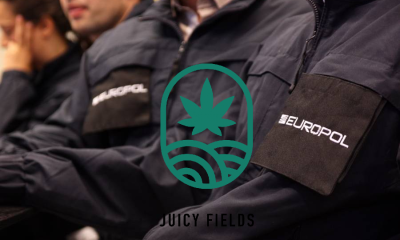

Juicy Fields case: 9 detained by Europol and Eurojustice. Scam exceeds 645 million euros
A joint investigation conducted by several European authorities, supported by Europol and Eurojust, culminated in the arrest of nine suspects...


Regular cannabis users may require more anesthesia during medical procedures
Regular cannabis users may require more anesthesia during medical procedures to remain sedated compared to...


The future of CBD in Japan: How legal reforms will shape the market
Late last year, Japan took a big step towards cannabis reform after approving...




